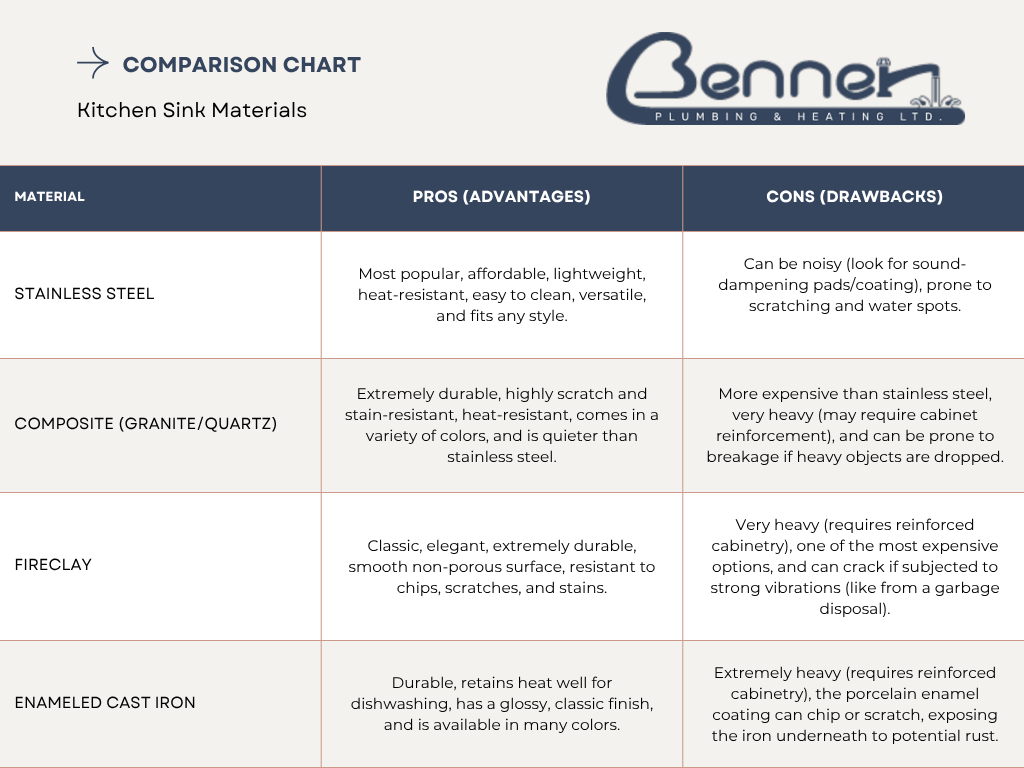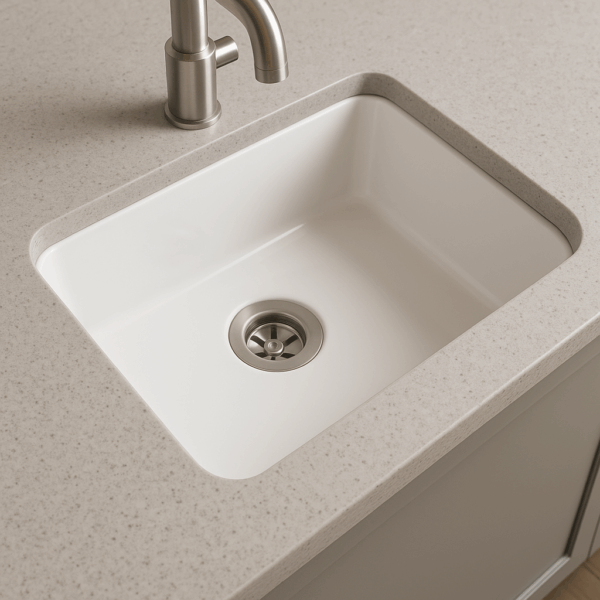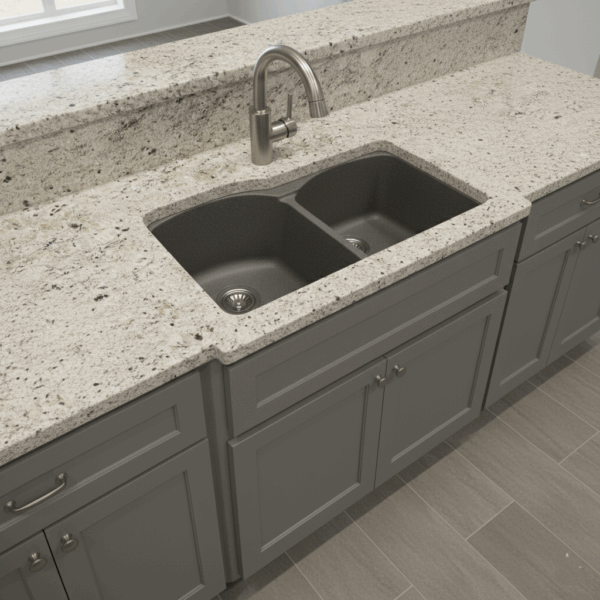Beyond the Faucet: Upgrading Your Kitchen with a New Sink
The kitchen sink is the ultimate workhorse in your home, seeing more action than almost any other fixture. Whether you’re considering a full renovation or just a simple upgrade, choosing the right sink is a critical decision that impacts both function and style. The burning question for every homeowner is: What kitchen sink is best?
The “best” sink isn’t a one-size-fits-all product; it’s the one that perfectly balances your lifestyle, kitchen design, and budget. To help you decide, we’ll break down the top materials and configurations available today.
Part 1: Comparing Top Kitchen Sink Materials
The material you choose dictates your sink’s durability, maintenance, and overall aesthetic. Here are the leading contenders:

So, what kitchen sink is best in terms of material?
- For the Busy Cook: A Composite sink offers the best combination of durability, heat resistance, and easy maintenance.
- For the Budget-Conscious: High-quality Stainless Steel (16- to 18-gauge) provides excellent value and performance.
- For Timeless Style: A Fireclay sink offers unmatched elegance and resilience, often used for the popular farmhouse look.
Part 2: Choosing the Right Sink Type and Configuration
Beyond the material, the shape and mounting style of your sink significantly affect workflow and cleaning.
Installation Types
1. Undermount Sinks: Installed below the countertop, creating a seamless and modern look.

- Pro: Allows you to sweep crumbs and water directly into the basin.
- Con: Typically works best with solid surface countertops (granite, quartz) and is more complex to install than a top-mount.
2. Top-Mount Sinks (Drop-in): Dropped into a pre-cut hole with a visible rim resting on the counter.

- Pro: Easiest and most affordable to install, suitable for almost all countertop materials.
- Con: The rim can trap dirt and grime, making clean-up slightly trickier.
3. Farmhouse Sinks (Apron-Front): Characterized by an exposed front that extends over the edge of the cabinet.

- Pro: Deep, wide basin is great for washing large pots and prevents splashing.
- Con: Requires special cabinetry and can be heavy, making installation more complex.
Bowl Configurations
1. Single-Bowl Sinks:

Features one large basin.
- Pro: Maximum space for soaking and washing oversized items like baking sheets and roasting pans.
- Con: Limits multitasking (you can’t rinse while soaking).
2. Double-Bowl Sinks:

Splits the sink into two basins (often a 50/50 or 60/40 split).
- Pro: Ideal for multitasking—you can wash on one side and rinse, dry, or use a garbage disposal on the other.
- Con: Each basin is smaller, which can make washing very large items difficult.
Your Best Kitchen Sink is Waiting with Benner Plumbing
The ultimate answer to what kitchen sink is best lies in your personal needs. Do you value the sleek, modern look of a stainless steel undermount? Are you drawn to the spacious, rustic charm of a fireclay farmhouse? Or does the low-maintenance durability of a composite double-bowl sink appeal most to your busy family?
Choosing the right sink is only half the battle; proper installation is key to a long, leak-free life. At Benner Plumbing, we specialize in the expert installation of all kitchen sink materials and types, ensuring your new sink is perfectly fitted, sealed, and plumbed.
Don’t let the choice overwhelm you. Contact Benner Plumbing today for professional advice and installation to make sure your new kitchen sink is truly the best fit for your home!
